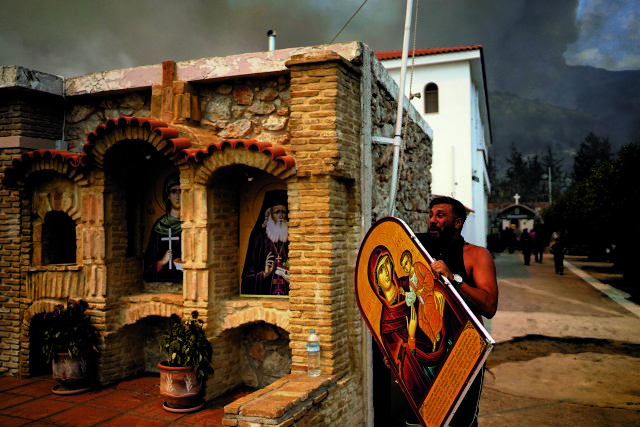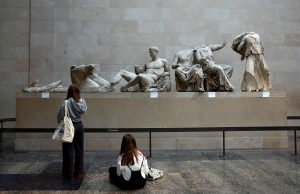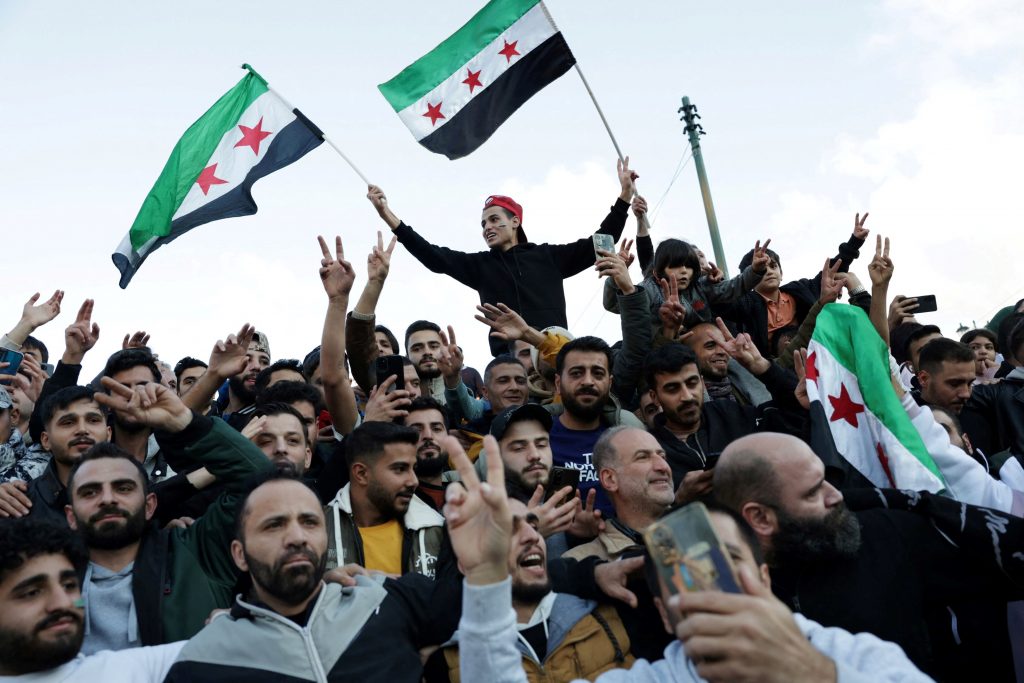Images tell stories beyond words, encapsulating emotions, intensity, and the rhythm of life. In the tapestry of 2023, photographs emerged, distinct in the conditions that gave birth to them but unified by their intensity and heartbeat. Two distinguished photojournalists, Thanassis Stavrakis and Menelaos Myrillas, spotlight a photograph that encapsulates their perspective of the passing year.
“I saw him coming from afar,” by Thanassis Stavrakis
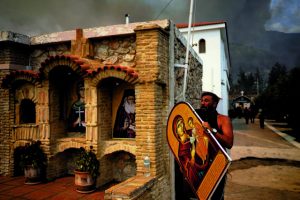
A man carries a saint Mary with Jesus icon to save it from a wildfire at Agia Paraskevi Christian Orthodox monastery in Acharnes a suburb of northern Athens, Greece, Wednesday, Aug. 23, 2023. Water-dropping planes from several European countries joined hundreds of firefighters Wednesday battling wildfires raging for days across Greece that have left 20 people dead, while major blazes were also burning in Spain’s Tenerife and in northwestern Turkey near the Greek border. (AP Photo/Thanassis Stavrakis)
The photograph was taken on Wednesday morning, August 23rd, at the Agia Paraskevi Monastery in Acharnes, during the raging wildfire on Mount Parnitha.
At that specific location, the heat and smoke made it challenging for everyone present. Within the monastery grounds, several individuals were engaged in efforts to prevent the fire from spreading further, as it had begun to consume the roof. Earlier, gas cylinders were spotted in a storage area, swiftly removed through rapid actions.
Taking a brief pause before attempting to approach the monastery courtyard, I saw this man emerging from the distance, clutching the icon. I immediately realized this was the photograph of the day. Fortunately, the monastery sustained minimal damage. As photojournalists, we are there to objectively portray events, as we always do, despite encountering hostility from some individuals that day.
I chose this image as my best for 2023 because it encapsulates in this man’s face the anguish of preserving the icon. It reflects the same anguish and sorrow experienced by our country’s inhabitants during uncontrollable wildfires that occur every summer. Having covered numerous events involving fires and natural disasters, I observe the phenomena escalating each year, and the response to them not always being feasible. I hope and wish for greater prevention in 2024.
“Beyond the Acceptable Caption,” by Menelaos Myrillas
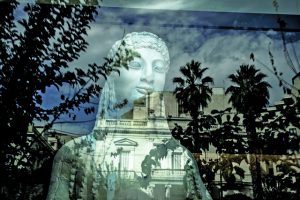
Students parade commemorating Greece’s entry in World War II in 1940, in Athens, on October 28, 2022 (SOOC/ Menelaos Myrillas)
“A replica of an ancient statue of a Maiden, placed in a shop window next to the Parliament.”
This would be an acceptable caption accompanying the photograph if it were to ascend to some photojournalistic agency. However, it doesn’t describe the power of this specific image. Generally, acceptable news captions never touch upon the essence of the medium, the photograph itself.
The second reading, the semiotics, the right to abstract, sometimes conclusive thinking is never permitted in captions because it offends the superficial objectivity believed to govern photojournalism. But such thoughts are not forbidden within the image itself. They prevail amidst political correctness. So yes, it is a replica of an ancient statue of a Maiden. In the flower shops, next to the Parliament. It gazes upon the street where blood was shed one December, watering the shop’s flowers that now host her. It looks at the buildings opposite, of different eras to each other, foreign to her criteria but accomplishments for the generations that built them. She patiently waits to be sold. Politically correct captions don’t bother her. She has the superiority of her era without being alien to ours. She corrects our numerous mistakes, even if she’s just a small replica.
The photograph was taken on a day like any other, without any particular cause or reason.
In the grand tapestry of photographs, these snapshots narrate not just moments frozen in time but the emotions, struggles, and narratives of an entire year, each a piece of a larger story that defines our human experience.
